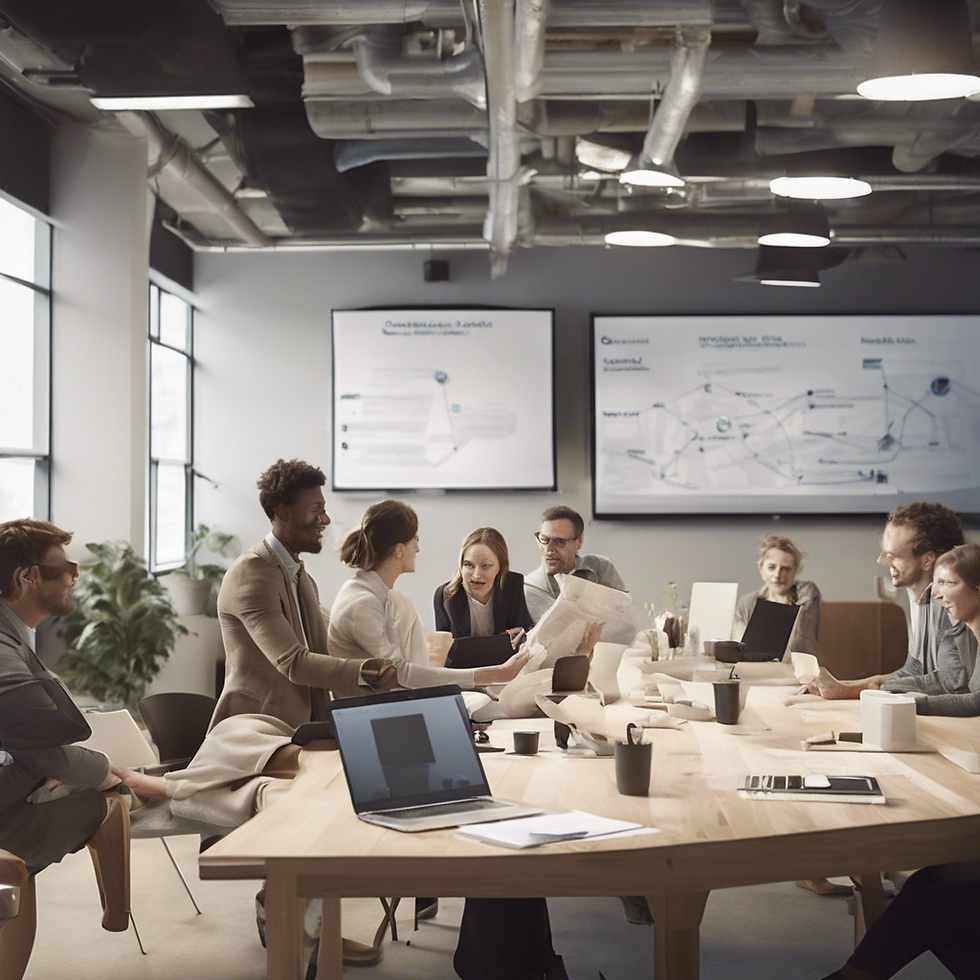Most Innovative Sustainable Workspaces
- Qasim Radaideh

- Aug 11, 2024
- 3 min read
In today's rapidly evolving corporate landscape, where sustainability is at the forefront of many businesses' agendas, eco-friendly office designs have emerged as a prominent trend. These Sustainable Workspaces designs not only contribute to a greener environment but also foster productivity and well-being among employees. Let's explore some of the most innovative and lesser-known eco-friendly office designs that are reshaping the way we work.

Biophilic Workspaces: Bringing Nature Indoors
One of the most captivating eco-friendly office designs is the concept of biophilic workspaces. By integrating natural elements such as plants, water features, and natural light into office interiors, biophilic design aims to create environments that mimic nature. Not only does this design approach enhance the aesthetic appeal of the workspace, but it also has proven benefits for employee well-being and productivity. Research suggests that exposure to nature within the workplace can reduce stress, boost creativity, and enhance cognitive function.
Upcycled Furniture: Redefining Sustainability
By incorporating upcycled furniture into office spaces, companies can significantly reduce their environmental footprint. Upcycling involves repurposing discarded materials or furniture items to create new, functional pieces. Not only does this practice divert waste from landfills, but it also adds a unique, artistic flair to the office environment. From desks made of reclaimed wood to chairs crafted from old industrial equipment, upcycled furniture showcases the beauty of sustainable design and circular economy principles.
Solar-Powered Offices: Harnessing Clean Energy
In an era where renewable energy is gaining momentum, solar-powered offices have become a symbol of innovation and environmental consciousness. By installing solar panels on office rooftops or facades, companies can generate clean, sustainable energy to power their operations. Beyond reducing energy costs, solar-powered offices contribute to mitigating the carbon footprint associated with traditional energy sources. Moreover, advancements in solar technology have made it easier for businesses of all sizes to embrace solar energy and transition towards greener practices.
Smart Lighting Systems: Enhancing Energy Efficiency
To optimize energy consumption and create a more sustainable workplace, many companies are turning to smart lighting systems. These systems utilize sensors, timers, and energy-efficient LED bulbs to adjust lighting levels based on natural light availability and occupancy. By automatically dimming or turning off lights in unoccupied areas, smart lighting systems help reduce electricity usage and minimize wastage. Not only does this result in cost savings for businesses, but it also contributes to a more environmentally friendly office environment.
Green Roofs: Transforming Urban Landscapes
Green roofs offer a novel solution to urban sustainability challenges by transforming conventional rooftops into vibrant green spaces. These vegetated roofs are not only visually appealing but also provide numerous environmental benefits. Green roofs help reduce the urban heat island effect, improve air quality, and promote biodiversity in urban areas. Additionally, they enhance insulation, leading to energy savings and improved thermal comfort within the office building. By incorporating green roofs into their designs, companies can foster a deeper connection to nature and demonstrate their commitment to environmental stewardship.

Sustainable Workspaces
In conclusion, these innovative eco-friendly office designs exemplify the exciting possibilities that arise when sustainability principles intersect with modern workplace requirements. By embracing such designs, businesses can create work environments that prioritize environmental stewardship, employee well-being, and operational efficiency. As the demand for sustainable practices continues to grow, these designs serve as inspiring examples of how companies can make a positive impact on the planet while fostering a culture of innovation and responsibility within their organizations. It's time to redefine the future of work through eco-conscious design!



Comments